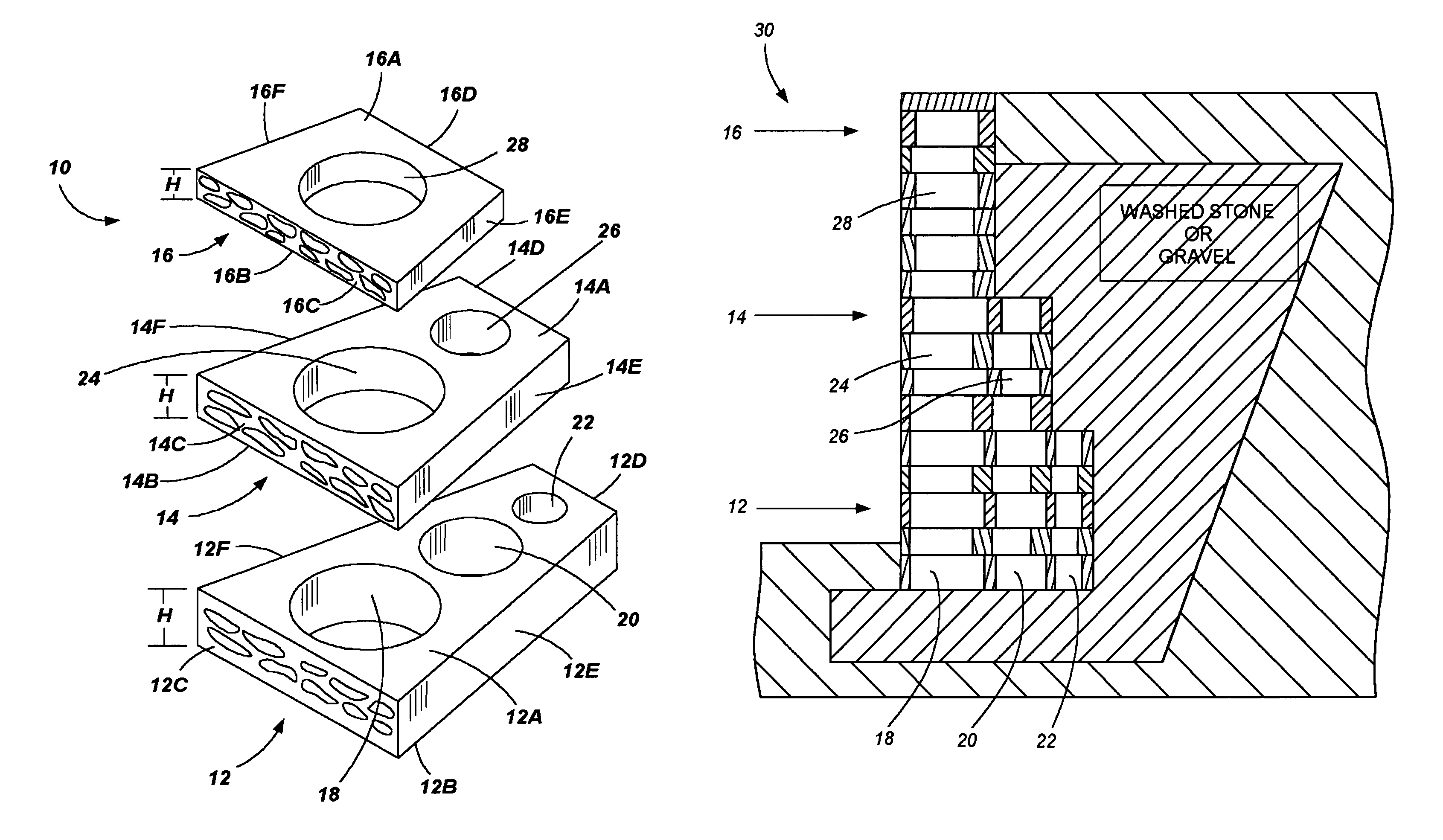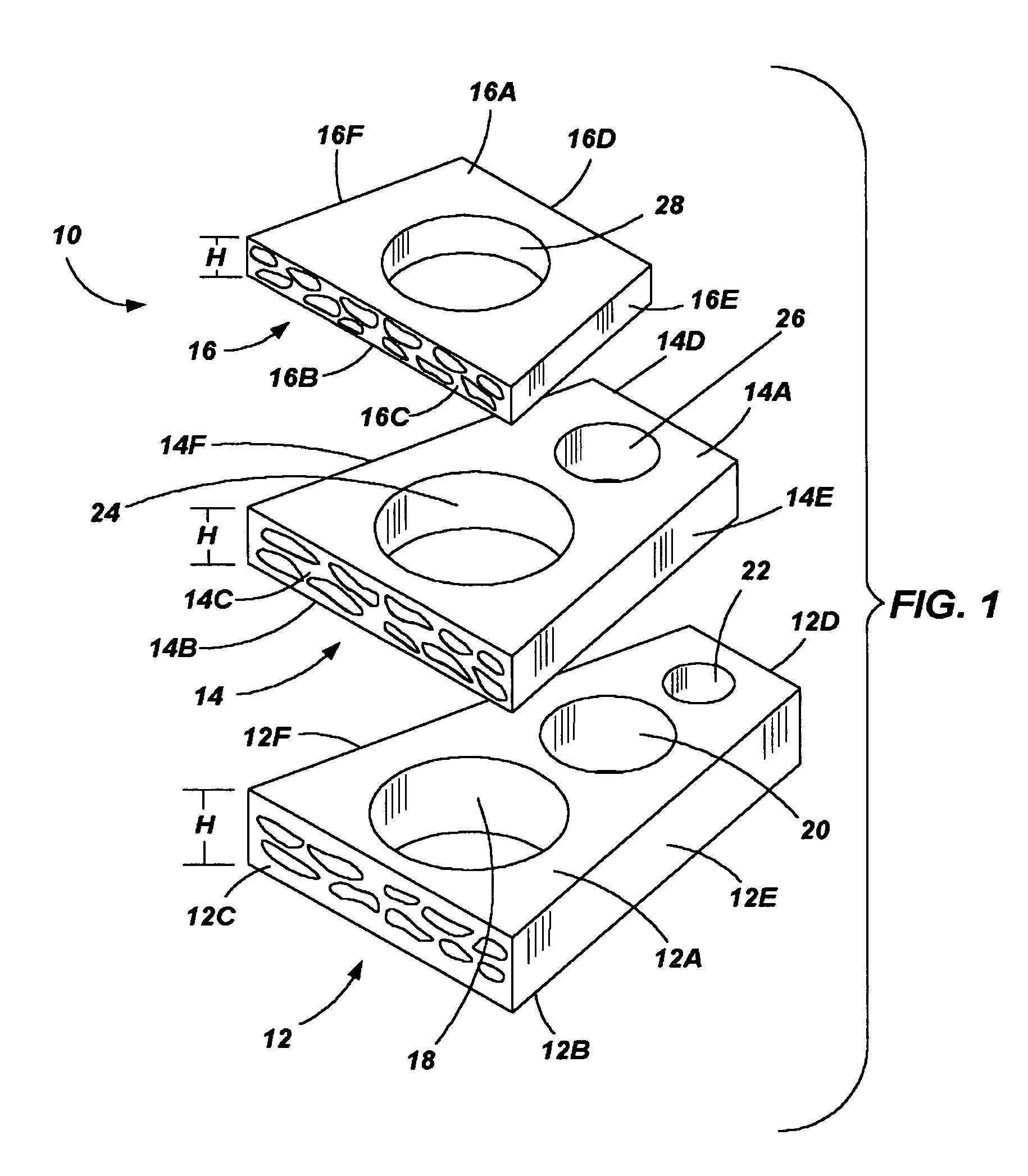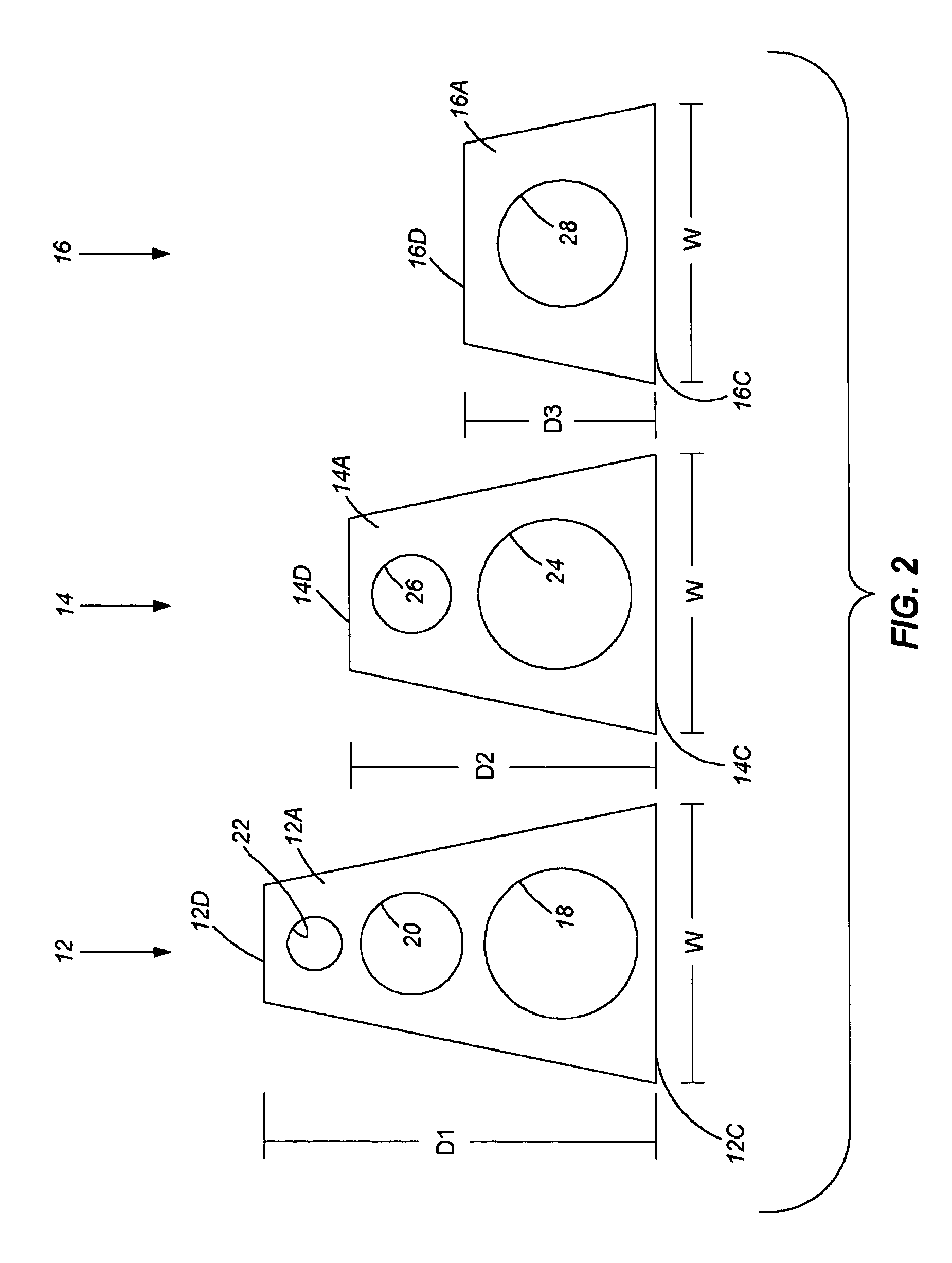Landscaping blocks for forming retaining walls and method of producing landscaping blocks
- Summary
- Abstract
- Description
- Claims
- Application Information
AI Technical Summary
Benefits of technology
Problems solved by technology
Method used
Image
Examples
Embodiment Construction
[0019]With further reference to the drawings, particularly FIGS. 1-4, the present invention is shown therein and comprises a set of precast concrete landscaping blocks. The set of landscaping blocks is referred to generally by the numeral 10. In the case of one embodiment, the set of precast concrete landscaping blocks 10 comprises a first group of blocks 12, a second group of blocks 14, and a third group of blocks 16. As seen in FIGS. 1 and 2, the three groups of blocks 12, 14, and 16 are of a different size. More particularly, each block of each group includes a depth. The depth of the blocks of the first group is referred to as D1, the depth of the blocks of the second group 14 is referred to as D2, and the depth of the third group of blocks 16 is referred to as D3. Further, each block includes a width W and a height H. In some embodiments, the height of the blocks can vary. In one set of blocks, the height of the individual blocks could be 3 inches, 4½ inches, and / or 6 inches.
[0...
PUM
 Login to view more
Login to view more Abstract
Description
Claims
Application Information
 Login to view more
Login to view more - R&D Engineer
- R&D Manager
- IP Professional
- Industry Leading Data Capabilities
- Powerful AI technology
- Patent DNA Extraction
Browse by: Latest US Patents, China's latest patents, Technical Efficacy Thesaurus, Application Domain, Technology Topic.
© 2024 PatSnap. All rights reserved.Legal|Privacy policy|Modern Slavery Act Transparency Statement|Sitemap



